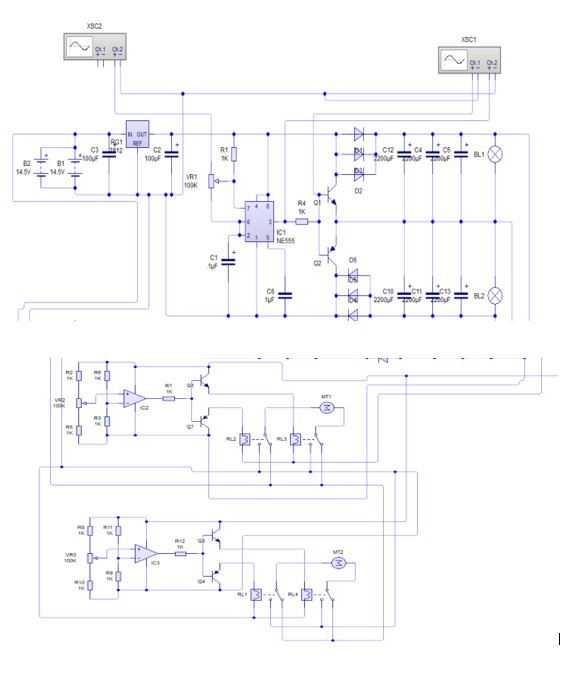A completely functional two-wheeled balancing vehicle that can transport one passenger. Natural motions will propel it forward and backward; forward and backward motion will be achieved by leaning forward and backward.
Tilting the handlebar to the side is the best way to turn. Self-balancing Gyro scooter is based on the inverted pendulum principle which maintains a constant angle with the vertical of zero degrees.
Gyro scooter is a smart vehicle that uses gyroscopic sensors to monitor the rider's motion and allowing them to go around, to steer, halt, or accelerate the vehicle This Gyro scooter is a pollution-free, environmentally beneficial mode of transportation. It is a mode of transportation that does not pollute the environment.
Project Objective:
- Design and development self-balancing gyro scooter by implementing Gyro sensors, microprocessors, microcontrollers, batteries.
- To introduce robotic function in our project using programming to control hoverboard.
- Testing, functionality and calibration of self-balancing hoverboard
- To coordinate with industry for entrepreneurship with production of successful design and model.
Socio-economic Benefits:
Zero emissions and the green aspect
Covers more ground
For security purposes as it has high visibility
Quick transportation for in hospitals and in shopping malls
Project Methodology:
1. Literature Review
Comprehensive survey and study required to overcome the flaws in design and to produce successful design of model.
2. CAD Model
The next step is to draw a CAD model using different software’s like CREO and in this process, we will get our desired model.
3.Mathematical Calculations
Determination of Power and Force.
4. Structural Analysis
Stress-strain analysis
5. Components Selection
The most important is component selection as we have to decide which component or quality of component do, we have to use which can easily withstand our resulting forces within the elastic limit without the fear of getting damaged or broken.
6. Assembling
After selecting the desired components then comes the step of assembling the parts to form our actual product which is a gyro scooter.
7. Testing
After the final shape of the Gyro Scooter now we are here to test it real-time then calculating the final observations and testing several times as it satisfies the elastic limit.
Problem Statement:
- To overcome lack of quick transportation and to avoid time lag in critical places like hospitals and organization an indigenous design of machine is required
-
- Shaft in a Gyro Scooter is of very much importance as the defect in the shaft length or balancing causes the Gyro Scooter to start wobbling and shaking
-
- when wheels are not rotating properly or moving smoothly as the battery problems may cause to stop the scooter
-
- Slipping is the most common phenomenon which is caused by the unbalancing of the rider which eventually causes the rider to drop off or fall from the scooter
-
- Sometimes gyro scooter seems like very hard to move due to wear and tear in the bearings or due to decrease in the lubricating fluid within the bearings
Project Outcome:
Successfully Completion of Gyro Scooter for Quick Transportation











